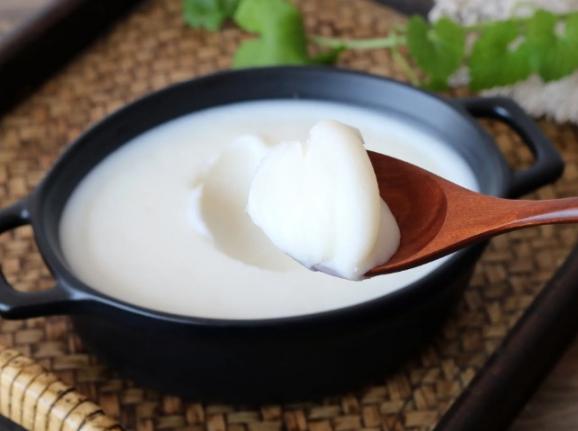
There are customs of killing pigs for the New Year in many places, and even many people aredietThe emperor also has a soft spot for lard, saying that lard is more than thatplantOil ecological and environmentally friendly, nutritionally safe. Is this really the case? This time we will compare lard with vegetable oil.
As high in fat as vegetable oil
The fat content of fatty meat is about 90%, while refined lard, like vegetable oil, has a fat content of more than 99%. Eating 1 gram of meat oil or vegetarian oil is eating 1 gram of fat, which is about 9 kcal. If the total amount of oil you eat every day is exceeded, it will promote weight gain.
Because lard is semi-solid at room temperature and has aroma, it will have a crispier taste when used in sesame cakes and pastries, and it is used for fryingvegetableIt will also be more fragrant. Therefore, for those who like this flavor, lard cooking and snacks will promote appetite more, but remember to control the amount.
The “oleic acid” content is not outstanding
Some people believe that lard is effective in preventing cardiovascular and cerebrovascular diseasesdiseaseBetter than regular vegetable oil. Is that so?
To prevent cardiovascular and cerebrovascular diseases, attention should be paid to the intake of monounsaturated fatty acids (oleic acid rich in olive oil) and polyunsaturated fatty acids (flaxseed oil and) in the dietfishoil).
Each 100 grams of lard contains 40%-50% saturated fatty acids, 40%-50% oleic acid, and the remaining one is polyunsaturated fatty acids, mainly linoleic acid, which is the kind of fatty acid that is particularly abundant in most vegetable oils. It contains less polyunsaturated fatty acids, with low levels of pro-inflammatory omega-6 fatty acids, but fewer omega-3 fatty acids that reduce inflammation.
Olive oil, almond oil, and macadamia nut oil all contain about 70% oleic acid. In recent years, our country has vigorously developed new varieties of vegetable oils such as camellia seed oil, canola oil, peanut oil, and soybean oil, which are close to or even exceed olive oilwaterFlat, lard is dwarfed.
In addition, lard contains cholesterol, while vegetable oil has zero cholesterol. According to our countryfoodThe ingredient list shows that there are 110 mg of cholesterol per 100 grams of lard. Eating 25 grams of lard a day will result in 28 mg of cholesterol. For healthy people, this amount is not a cause for concern, but for those who are prescribed by doctors to control cholesterol intake of no more than 200 mg per day, they should still be cautious.
vitaminThere is no advantage in the content
Lard is a type of oil that contains fat-soluble vitamins, including vitamin A, vitamin D, vitamin E, vitamin K, and almost no B vitamins and vitamin C. According to the data of our country’s food composition list (standard version), every 100 grams of refined lard contains 27 micrograms of vitamin A and 5.2 mg of vitamin E. pressUnited StatesAccording to the data of the food composition database, the vitamin D content of lard is 102 IU, and the vitamin K is so low that it cannot be measured.
In comparison, the content of vitamin A and vitamin D in cream is more than ten to dozens of times that of lard; Vegetable oils such as soybean oil and rapeseed oil contain more than ten to dozens of times that of lard. Simply put, lard does not significantly help in supplying the vitamins needed for the day.
Additive-free does not necessarily mean environmentally friendly
Commercially available refined lard also needs antioxidant protection. Antioxidants will not be added to home refining lard, but there are often trace amounts of water and iron ion residues, which are more likely to oxidize and deteriorate, and must be consumed as soon as possible.
At the same time, when refining lard at home, because the firepower cannot be accurately controlled, overheating will produce harmful heterocyclic amines, and polycyclic aromatic hydrocarbons carcinogens may also be produced. These harmful substances, as well as AGEs that accelerate aging (advanced stage).sugarBasicized end products) will enter the lard from the browned oil residue. Therefore, from the perspective of pro-inflammatory and pro-aging, home-refined lard is not more advantageous than vegetable oil.
According to the basic law of ecology of biomagnification, the higher the trophic level of organisms, the greater the residue of environmental pollution components that are difficult to decompose. Organochlorine pesticides such as 666, polluting components such as dioxins and polychlorinated biphenyls, as well as heavy metal components, are inanimalThe content in the body will be higher than in the plant. Among them, organochlorines, dioxins, polychlorinated biphenyls, etc. are easily soluble in oils. From this point of view, compared with the same amount of consumption, the environmental pollutants obtained from eating lard will be higher than the amount of vegetable oil.
It has a frying advantage over vegetable oil
Dishes with high-fiber ingredients taste better when cooked with saturated fatty acids, so it will be better to use lard to cook bamboo shoots, dried plums, dried beans and other ingredients. On the other hand, lard has a higher saturated fat content than vegetable oil, better heat resistance, and will be relatively stable when frying for a long time, producing fewer harmful substances.
In terms of cooking methods, lard has more advantages when frying at high temperatures or making crispy snacks.
In short, people who eat less meat and more soy products are suitable for using some lard or butter, and people who eat a lot of meat do not need to buy lard for stir-frying.
